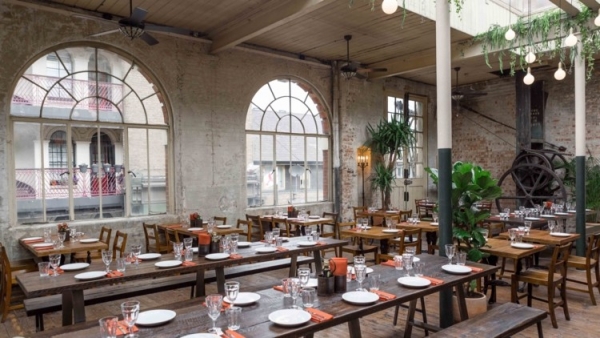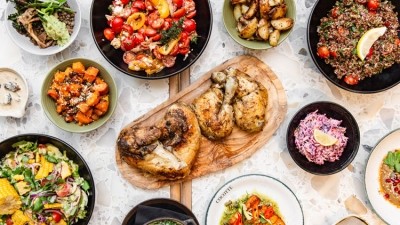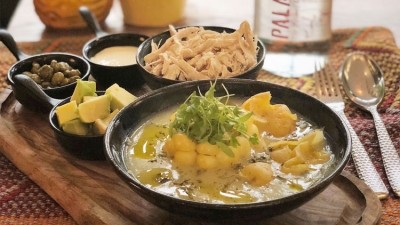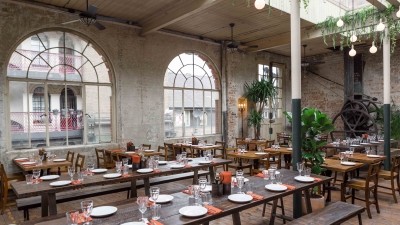Chef masterclass: Piri-piri chicken by Casa do Frango's Lucien Green
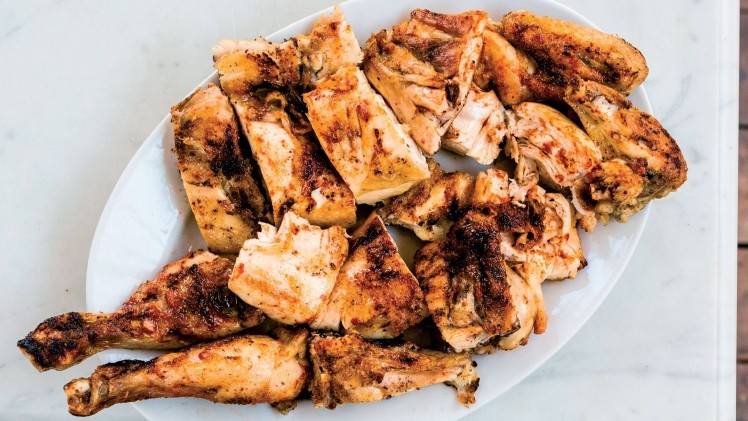
The Portuguese have an illustrious history of exploration, and the country’s Golden Age of Discovery, in the 15th and 16th centuries, saw Portuguese fleets (led by Vasco da Gama and Christopher Columbus, among others) sail the globe in search of new territories for the fledgling Portuguese Empire.
While the spice trade was hugely lucrative, the Portuguese also exported their own cuisine. Take tempura for instance. Traders and missionaries from the Alentejo region of southern Portugal took the technique to Japan. Specifically, to Nagasaki. Jesuits (and their Japanese converts) were forbidden to eat flesh on the quarterly Ember Days, so they adapted a dish of deepfried vegetables from home. In Portuguese, the Ember Days are known as tempora, and both the name and the technique endured.
And there is vindaloo, a corruption of carne de vinha d’alhos, a Portuguese dish of pork (or rabbit) stewed with wine and garlic.
Sailors bound for the Portuguese colony of Goa would preserve their meat rations in wine and garlic during the long voyage; eventually, the wine was replaced by local palm vinegar, with chillies added to the garlic, and the Goan dish of vindaloo – actually a meaty pickle, rather than a curry – was created.
Similarly, the Portuguese introduced many foodstuffs to their African colonies. Mozambique, for example, where the national diet still features tomatoes, garlic, onions, coriander and various kinds of pepper. And piri-piri, the simple Algarve dish of spiced and grilled chicken which, thanks to the South African-owned Nando’s chain, has conquered the world even more thoroughly than Portugal’s revered conquistadores.
Borough Market’s Casa do Frango (‘House of Chicken’) takes piri-piri very seriously. Head chef Lucien Green knows a thing or two about kitchen processes, having taught the fine arts of fishmongery and butchery to dozens of recruits at Jamie Oliver’s 15 restaurant, but Casa do Frango forced him to goback to basics. “I’d gone on a three-day blitz to the Algarve with Marco [Mendes, Casa do Frango’s half-Algarvian co-owner]: it was amazing. We tried out four piri-piri restaurants a day, but I didn’t feel that any one of them completely nailed it.
“Some of them were huge places, with chicken just flying out of their kitchens. Like a typical chef, I was thinking about how we were going to do the numbers: maybe we could sous-vide the chicken to speed up the process and get a consistent product. Then Marco said ‘no, I want us to do everything from raw, over charcoal. If they can do it, so can we’. So that’s what we do.”
As a result of this decision, the main feature of the Casa do Frango kitchen is a long trough of charcoal in various stages of combustion. The grill sits about 20cm above the coals: “If you can hold your hand there for more than 15 seconds, it’s not hot enough.
“One guy salts the raw chickens, then another guy turns it over and over on the grill: it takes 20 to 25 minutes to cook. We don’t add anything but salt (and it has to be Maldon) until the chicken is cooked.
“It gets a glaze straight from the grill, then it rests for five minutes, then we chop it up. The wing with a bit of the breast, then the rest of the breast chopped in half, the thigh chopped in half, and the drumstick left whole, so there are six chunks for each half chicken.”
These are then given another basting before being plated and drizzled with more of the oil as a final glaze.
The most important aspect of the process is to cook the chicken evenly. Green has his chickens – all free-range, and weighing a kilo or just under – reverse spatchcocked.
Normal spatchcocking involves removing the backbone and pressing the chicken flat; Green’s method is to take out the wishbone, then remove the breastbone but leave in the ribs, dislocate the thighs at the hip, then carefully cut through the skin of the breast but not the flesh, then put nicks in the shoulders and dislocate the wings, then make two slightly deeper cuts in each thigh, and one in each drumstick.
He is understandably coy when it comes to the exact recipe for the spicy oil, but it is a mix of piri-piri chillies and milder dried chillies. Try grinding African dried bird’s eye chillies (available at Chilli Wizards) to a powder and mixing them with an equal quantity of chilli flakes: the flakes will stick attractively to the chicken, while the powder will penetrate the flesh and give most of the heat and flavour.
Casa do Frango also offers two other versions of its charcoal-grilled chicken, both of which have their aficionados: lemon and garlic chicken, using the same oil but without the chilli; and oregano chicken, in which Green substitutes 8g of dried oregano for the chilli. Perhaps, unsurprisingly, it is the piri-piri version that accounts for 60% of sales. As Green says: “the British love a bit of spice… probably even more than the Portuguese.”
Piri-piri chicken
Ingredients
1 free-range chicken (900g-1kg, reverse spatchcocked: see text)
Maldon salt
For the piri-piri oil
1l sunflower oil
50g garlic, peeled
30g lemon juice
3g Maldon salt
16g chilli mix (see text)
Method
1. Blend the oil, garlic, lemon and the salt in a Thermomix or liquidiser until smooth. Add the chilli mix and combine thoroughly. Leave to infuse for 24 hours before using.
2. Salt the chicken thoroughly with the Maldon salt, then grill over charcoal for 20 minutes, turning frequently, until the flesh is cooked and the skin is crisp. Remove from the heat.
3. Using a 5cm-wide pastry brush, baste the chicken generously with the piri-piri oil. Rest for five minutes, then chop the chicken in half and chop each half into six pieces (see text). Baste each piece thoroughly again with the oil. Serve on a warm plate, spooning over a little more of the oil.
